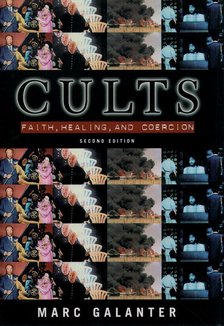Recommended Books

Natural Causes: An Epidemic of Wellness, the Certainty of Dying, and Killing Ourselves to Live Longer
Author:
Barbara Ehrenreich
ISBN 13:
978-1455535897
From the celebrated author of Nickel and Dimed , Barbara Ehrenreich explores how we are killing ourselves to live longer, not better. A razor-sharp polemic which offers an entirely new understanding of our bodies, ourselves, and our place in the universe, Natural Causes describes how we over-prepare and worry way too much about what is inevitable. One by one, Ehrenreich topples the shibboleths that guide our attempts to live a long, healthy life -- from the importance of preventive medical screenings to the concepts of wellness and mindfulness, from dietary fads to fitness culture. But Natural Causes goes deeper -- into the fundamental unreliability of our bodies and even our "mind-bodies," to use the fashionable term. Starting with the mysterious and seldom-acknowledged tendency of our own immune cells to promote deadly cancers, Ehrenreich looks into the cellular basis of aging, and shows how little control we actually have over it. We tend to believe we have agency over our bodies, our minds, and even over the manner of our deaths. But the latest science shows that the microscopic subunits of our bodies make their own "decisions," and not always in our favor. We may buy expensive anti-aging products or cosmetic surgery, get preventive screenings and eat more kale, or throw ourselves into meditation and spirituality. But all these things offer only the illusion of control. How to live well, even joyously, while accepting our mortality -- that is the vitally important philosophical challenge of this book. Drawing on varied sources, from personal experience and sociological trends to pop culture and current scientific literature, Natural Causes examines the ways in which we obsess over death, our bodies, and our health. Both funny and caustic, Ehrenreich then tackles the seemingly unsolvable problem of how we might better prepare ourselves for the end -- while still reveling in the lives that remain to us.
Find on:
 Amazon
Amazon

The Nature and Functions of Dreaming
Author:
Ernest Hartmann M.D.
ISBN 13:
978-0199751778
iThe Nature and Function of Dreamingi presents a comprehensive theory of dreaming based on many years of psychological and biological research by Ernest Hartmann and others. Critical to this theory is the concept of a Central Image; in this volume, Hartmann describes his repeated finding that dreams of being swept away by a tidal wave are common among people who have recently experienced a trauma of some kind - a fire, an attack, or a rape. Dreams with these Central Images are not dreams of the traumatic experience itself, but rather the Central Image reveals the emotional response to the experience. Dreams with a potent Central Image, like the tidal wave, vary in intensity along with the severity of the trauma; this pattern was shown quite powerfully in a systematic study of dreams occuring before and after the September 11 attacks in New York. Hartmann's theory comprises three fundamental elements: dreaming is simply one form of mental functioning, occurring along a continuum from focused waking thought to reverie, daydreaming, and fantasy. Second, dreaming is hyperconnective, linking material more fluidly and making connections that aren't made as readily in waking thought. Finally, the connections that are made are not random, but rather are guided by the dreamer's emotions or emotional concerns - and the more powerful the emotion, the more intense the Central Image.

Cults: Faith, Healing and Coercion
Author:
Marc Galanter
ISBN 13:
978-0195123708
From the mass weddings of Sun Myung Moon's Unification Church to the ritual suicides at Heaven's Gate, charismatic cults and their devotees have become facts of American life. Using material gleaned from twenty-five years of direct encounters with cults and their detractors, as well as extensive research, Marc Galanter offers the most extensive psychological analysis of these organizations available. Cults explores not only how members feel and think at all stages of their involvement, but also how larger social and psychological forces reinforce individual commitment within the cults. For this revised and newly-illustrated second edition, Galanter has added three new chapters on cult development in the 1990s, spiritual recovery movements, and alternative medicine.
Find on:
 Amazon
Amazon

The Spell of the Sensuous: Perception and Language in a More-Than-Human World
Author:
David Abram
ISBN 13:
978-0679776390
Winner of the International Lannan Literary Award for Nonfiction Animal tracks, word magic, the speech of stones, the power of letters, and the taste of the wind all figure prominently in this intellectual tour de force that returns us to our senses and to the sensuous terrain that sustains us. This major work of ecological philosophy startles the senses out of habitual ways of perception. For a thousand generations, human beings viewed themselves as part of the wider community of nature, and they carried on active relationships not only with other people with other animals, plants, and natural objects (including mountains, rivers, winds, and weather patters) that we have only lately come to think of as "inanimate." How, then, did humans come to sever their ancient reciprocity with the natural world? What will it take for us to recover a sustaining relation with the breathing earth? In The Spell of the Sensuous David Abram draws on sources as diverse as the philosophy of Merleau-Ponty, Balinese shamanism, Apache storytelling, and his own experience as an accomplished sleight-of-hand of magician to reveal the subtle dependence of human cognition on the natural environment. He explores the character of perception and excavates the sensual foundations of language, which--even at its most abstract--echoes the calls and cries of the earth. On every page of this lyrical work, Abram weaves his arguments with a passion, a precision, and an intellectual daring that recall such writers as Loren Eisleley, Annie Dillard, and Barry Lopez.